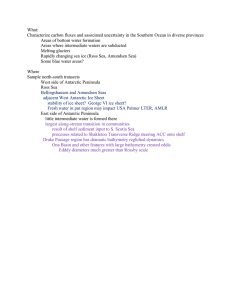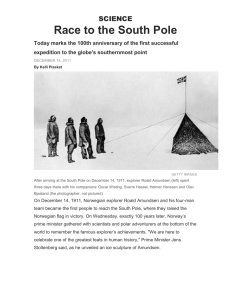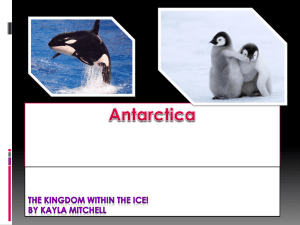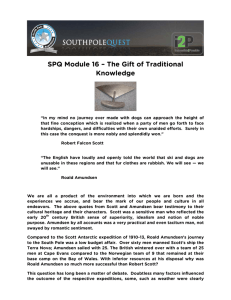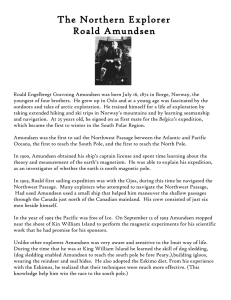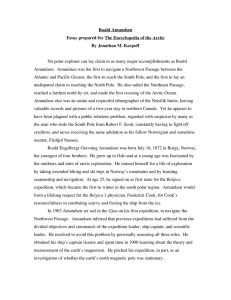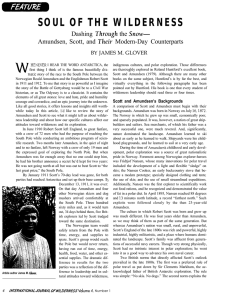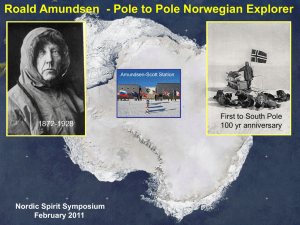Roald Amundsen - first man to reach both North and South Poles
advertisement
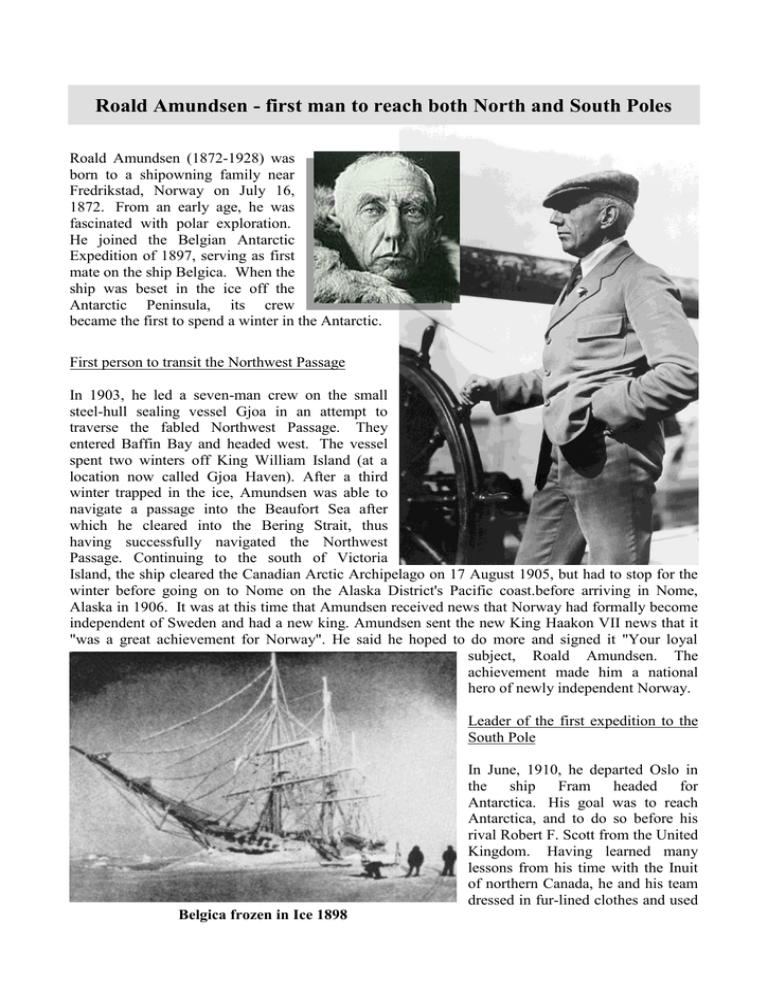
Roald Amundsen - first man to reach both North and South Poles Roald Amundsen (1872-1928) was born to a shipowning family near Fredrikstad, Norway on July 16, 1872. From an early age, he was fascinated with polar exploration. He joined the Belgian Antarctic Expedition of 1897, serving as first mate on the ship Belgica. When the ship was beset in the ice off the Antarctic Peninsula, its crew became the first to spend a winter in the Antarctic. First person to transit the Northwest Passage In 1903, he led a seven-man crew on the small steel-hull sealing vessel Gjoa in an attempt to traverse the fabled Northwest Passage. They entered Baffin Bay and headed west. The vessel spent two winters off King William Island (at a location now called Gjoa Haven). After a third winter trapped in the ice, Amundsen was able to navigate a passage into the Beaufort Sea after which he cleared into the Bering Strait, thus having successfully navigated the Northwest Passage. Continuing to the south of Victoria Island, the ship cleared the Canadian Arctic Archipelago on 17 August 1905, but had to stop for the winter before going on to Nome on the Alaska District's Pacific coast.before arriving in Nome, Alaska in 1906. It was at this time that Amundsen received news that Norway had formally become independent of Sweden and had a new king. Amundsen sent the new King Haakon VII news that it "was a great achievement for Norway". He said he hoped to do more and signed it "Your loyal subject, Roald Amundsen. The achievement made him a national hero of newly independent Norway. Leader of the first expedition to the South Pole In June, 1910, he departed Oslo in the ship Fram headed for Antarctica. His goal was to reach Antarctica, and to do so before his rival Robert F. Scott from the United Kingdom. Having learned many lessons from his time with the Inuit of northern Canada, he and his team dressed in fur-lined clothes and used Belgica frozen in Ice 1898 skis and dog sleds for transportation. The team of five persons and 16 dogs reached the South Pole on December 14, 1911 (over a month before Scott). They left a small tent and a letter commemorating the event and headed back, arriving on January 25, 1912. Amundsen’s expedition benefited from careful preparation, good equipment, appropriate clothing, a simple primary task (Amundsen did no surveying on his route south and is known to have taken only two photographs), an understanding of dogs and their handling, and the effective use of skis. In contrast to the misfortunes of Scott’s team, Amundsen’s trek proved rather smooth and uneventful. Amundsen crew on the South Pole In Amundsen’s own words: I may say that this is the greatest factor—the way in which the expedition is equipped—the way in which every difficulty is foreseen, and precautions taken for meeting or avoiding it. Victory awaits him who has everything in order — luck, people call it. Defeat is certain for him who has neglected to take the necessary precautions in time; this is called bad luck. — from The South Pole, by Roald Amundsen Airship crossing of the Arctic During the years 1918-1921, he led an unsuccessful attempt to transit the Northeast Passage from west to east. In 1926, Amundsen participated in the first crossing of the Arctic in an airship. The airship Norge, designed and piloted by the aeronautical engineer Umberto Nobile, flew from Spitsbergen to Alaska on May 11-13, 1926. In 1928 Nobile attempted another polar flight in his new airship Italia. When the airship encountered difficulties and crashed on the ice, Amundsen and others departed in a flying boat from Tromsø on a rescue mission. The airplane crashed and Amundsen’s body was never found. His influence on polar exploration remains indelible. ~~~~~~~~~~~~~~~*~~~*~~~*~~~~~~~~~~~~~~~
